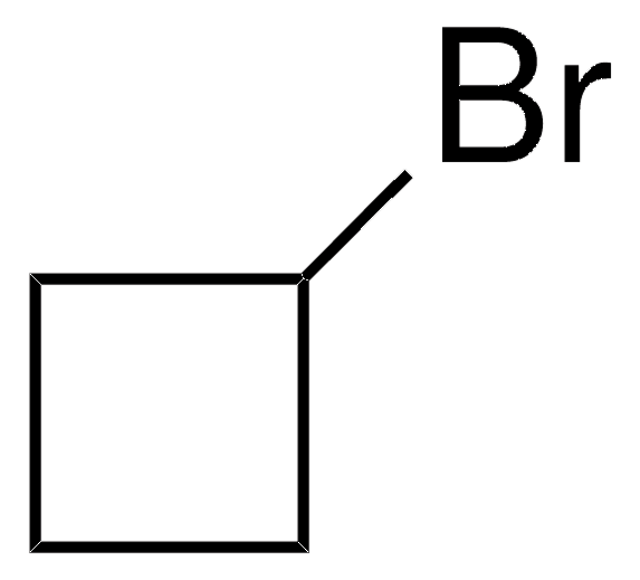482099
Cyclopropanemethanol
≥99.5%
Sinónimos:
(Hydroxymethyl)cyclopropane, CPMO, Cyclopropyl carbinol, Cyclopropylmethanol
About This Item
Productos recomendados
Nivel de calidad
Ensayo
≥99.5%
índice de refracción
n20/D 1.431 (lit.)
bp
123-124 °C/738 mmHg (lit.)
densidad
0.89 g/mL at 25 °C (lit.)
grupo funcional
hydroxyl
cadena SMILES
OCC1CC1
InChI
1S/C4H8O/c5-3-4-1-2-4/h4-5H,1-3H2
Clave InChI
GUDMZGLFZNLYEY-UHFFFAOYSA-N
¿Está buscando productos similares? Visita Guía de comparación de productos
Categorías relacionadas
Descripción general
Aplicación
- cyclopropanecarbaldehyde
- cyclopropylmethylsulfonate
- dibenzyl cyclopropylmethyl phosphate
Palabra de señalización
Warning
Frases de peligro
Consejos de prudencia
Clasificaciones de peligro
Flam. Liq. 3
Código de clase de almacenamiento
3 - Flammable liquids
Clase de riesgo para el agua (WGK)
WGK 1
Punto de inflamabilidad (°F)
95.0 °F - closed cup
Punto de inflamabilidad (°C)
35 °C - closed cup
Equipo de protección personal
Eyeshields, Faceshields, Gloves, type ABEK (EN14387) respirator filter
Elija entre una de las versiones más recientes:
¿Ya tiene este producto?
Encuentre la documentación para los productos que ha comprado recientemente en la Biblioteca de documentos.
Nuestro equipo de científicos tiene experiencia en todas las áreas de investigación: Ciencias de la vida, Ciencia de los materiales, Síntesis química, Cromatografía, Analítica y muchas otras.
Póngase en contacto con el Servicio técnico









